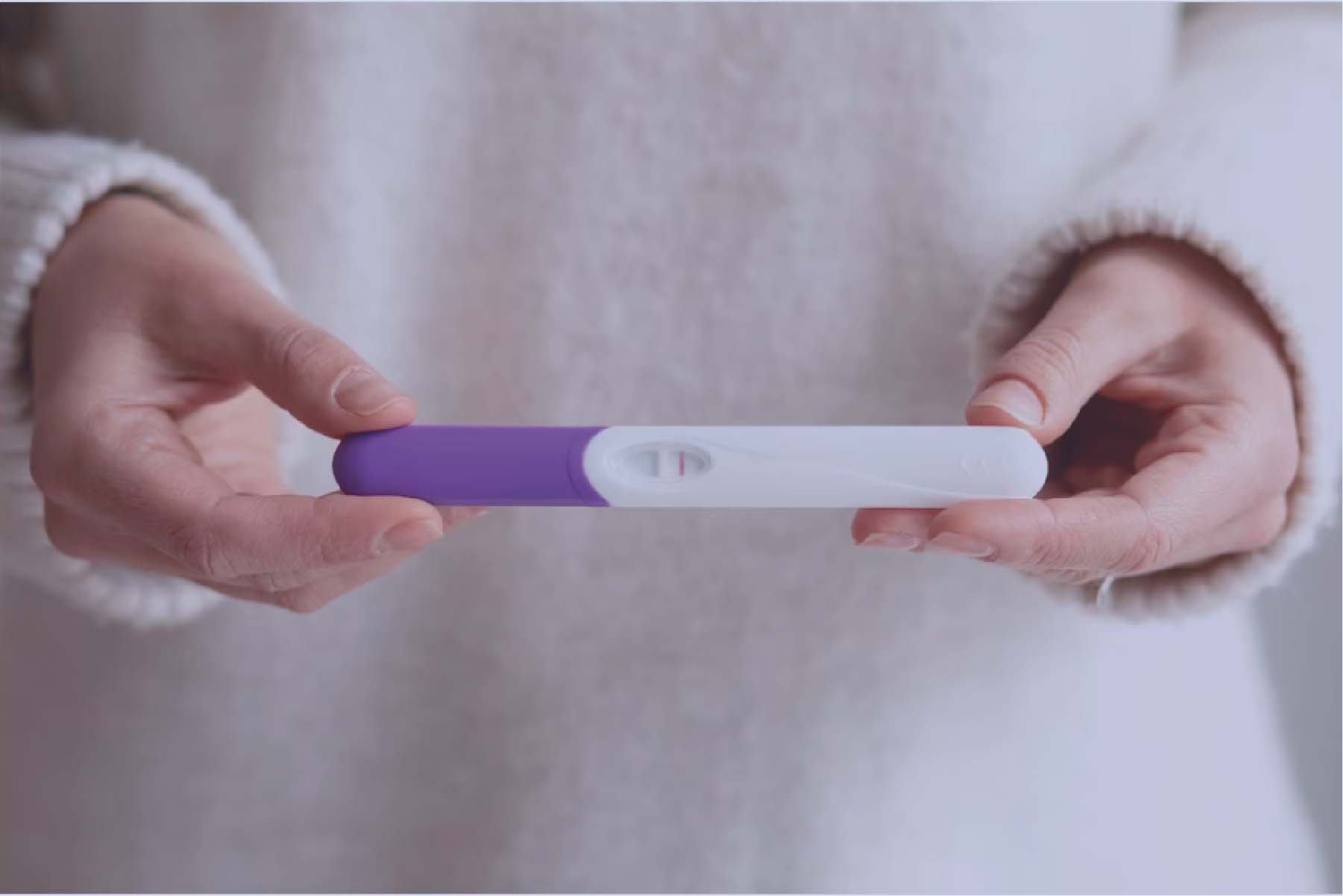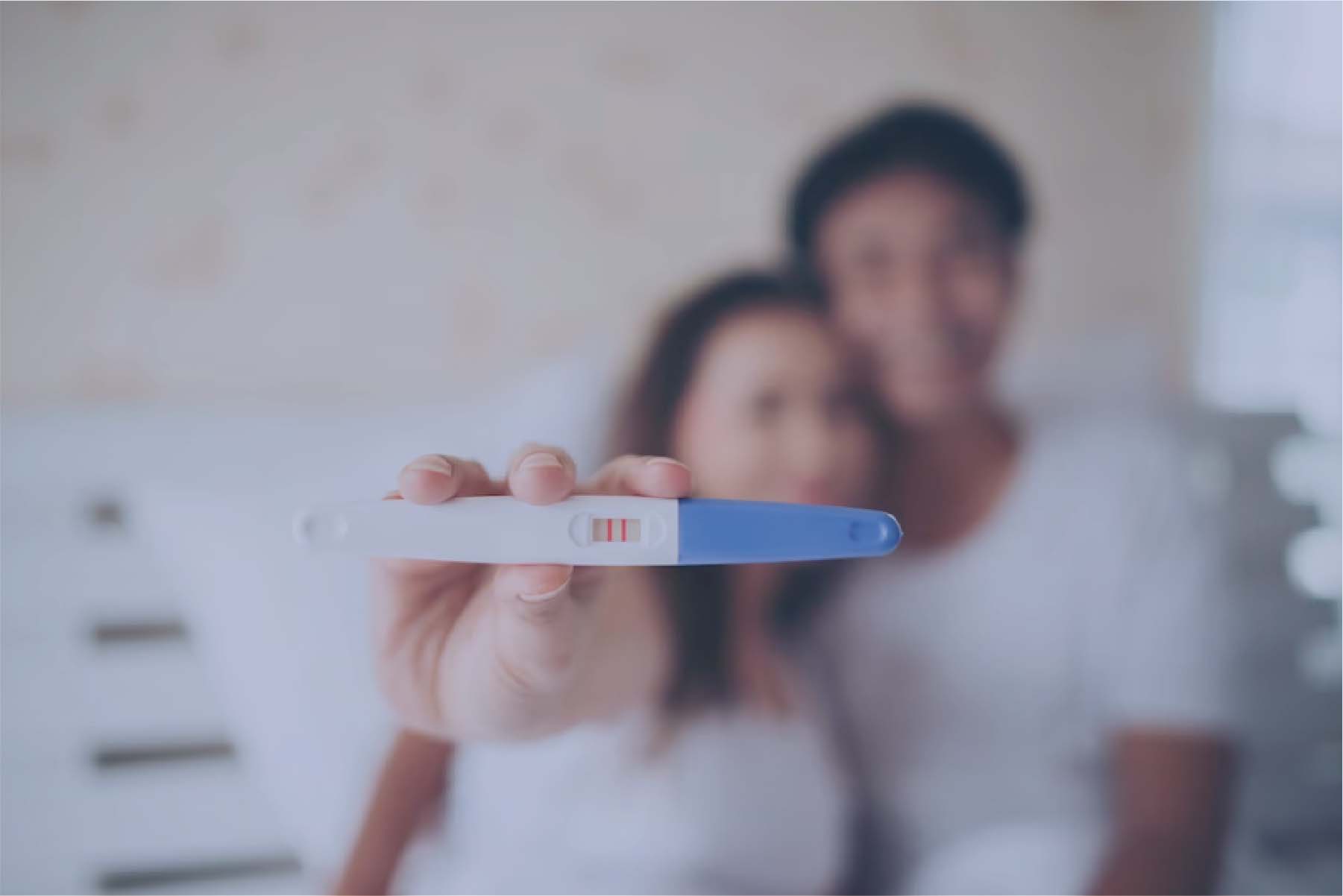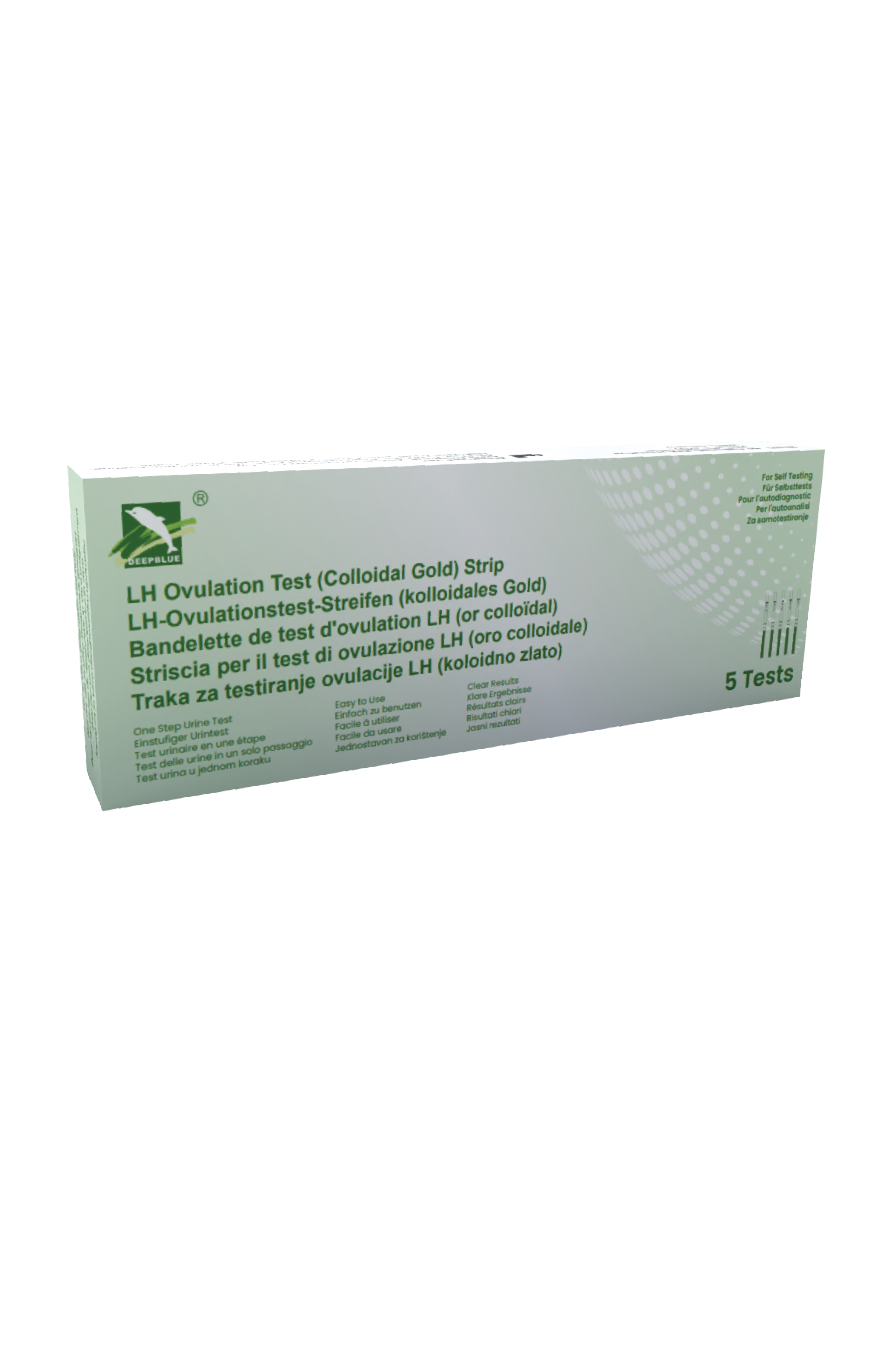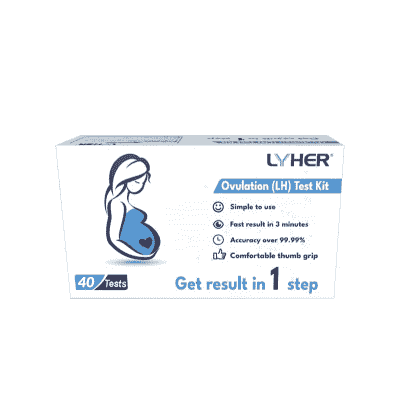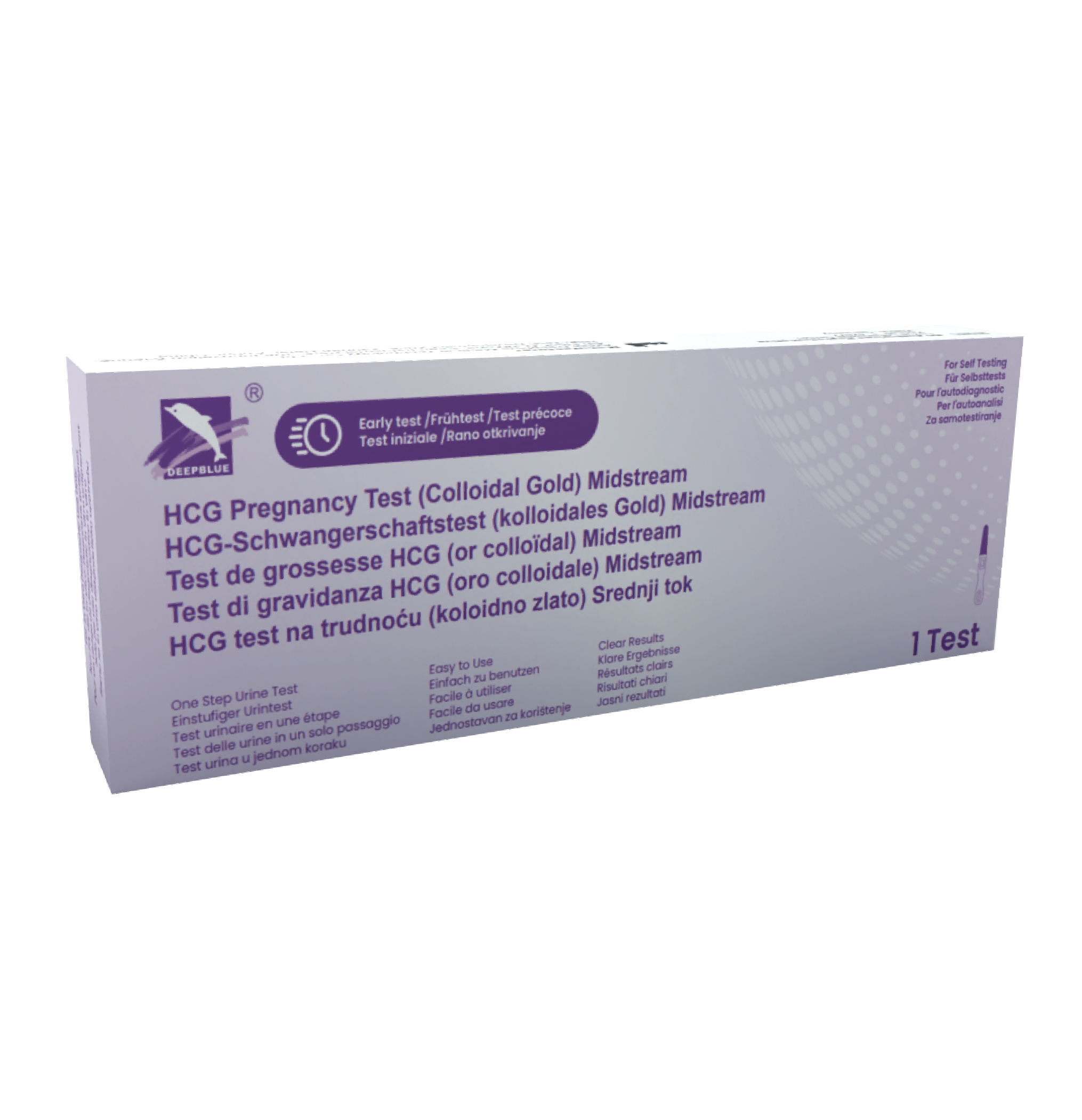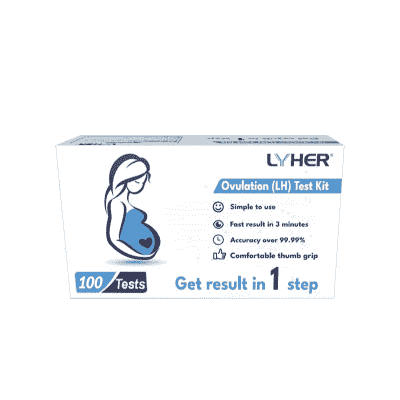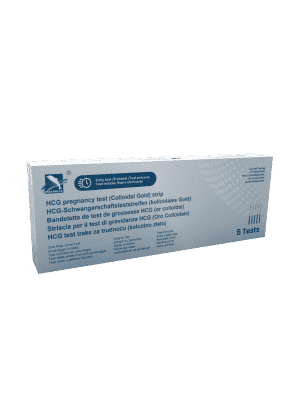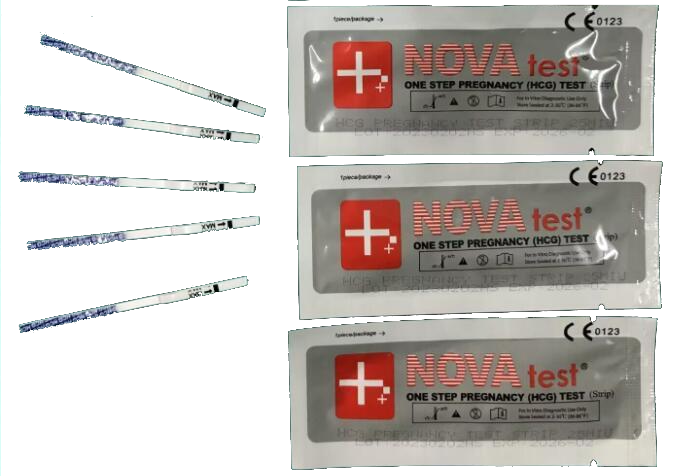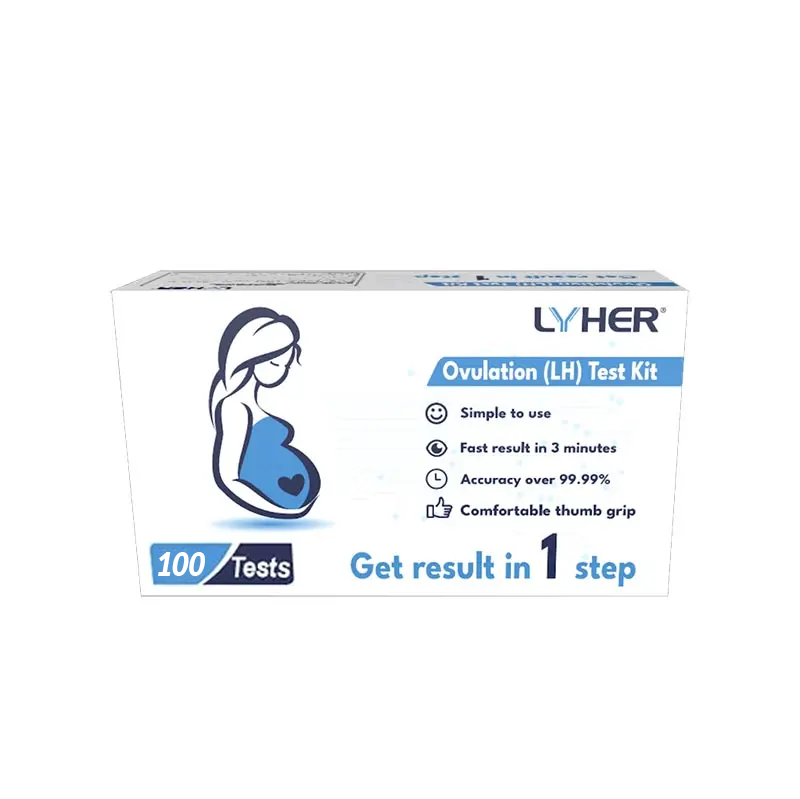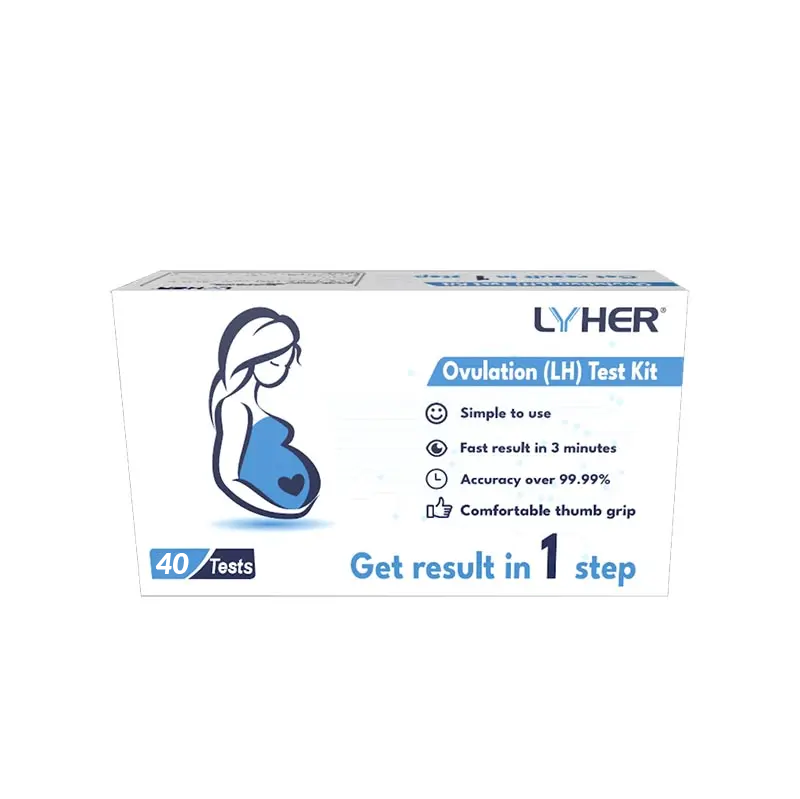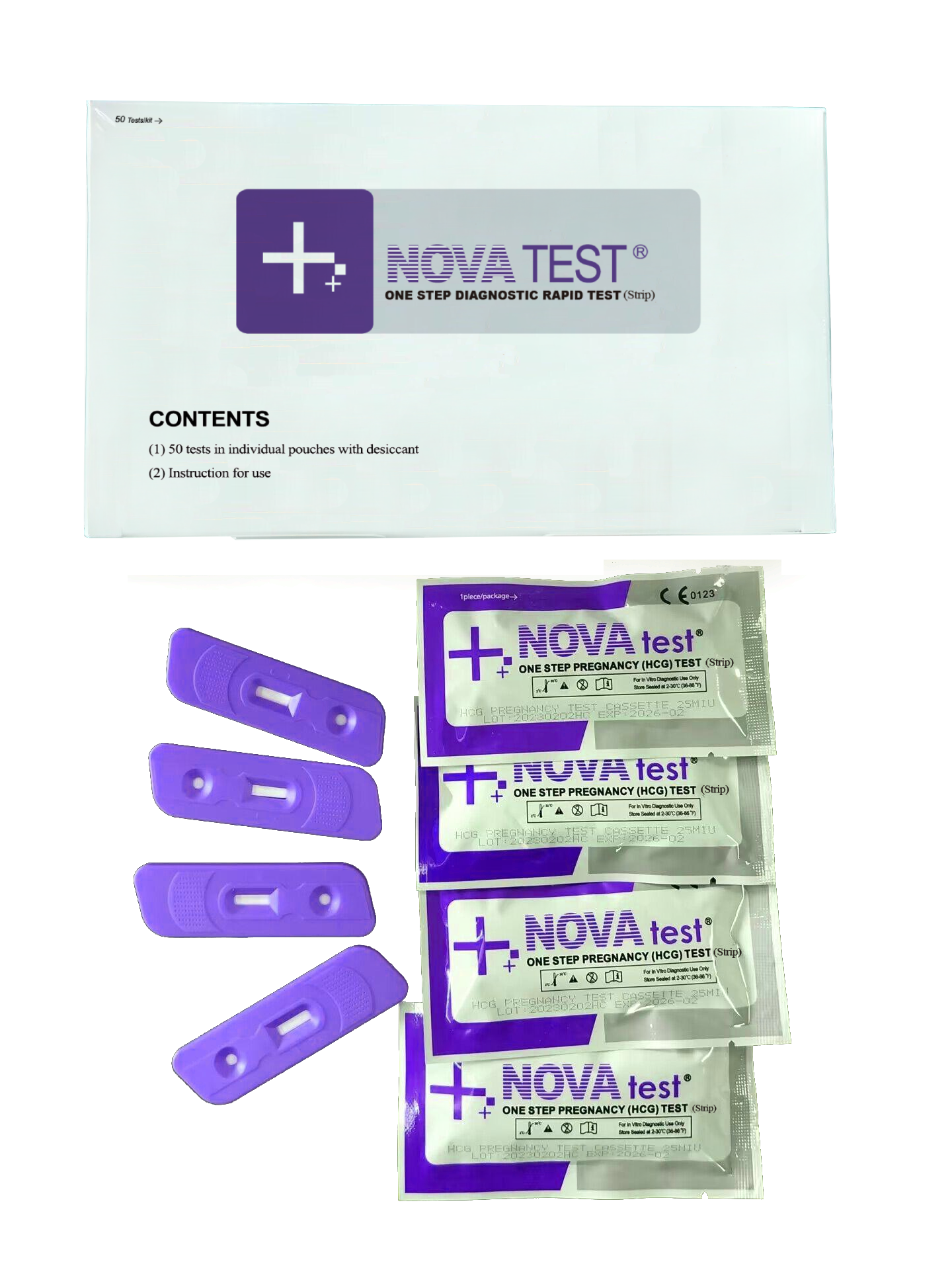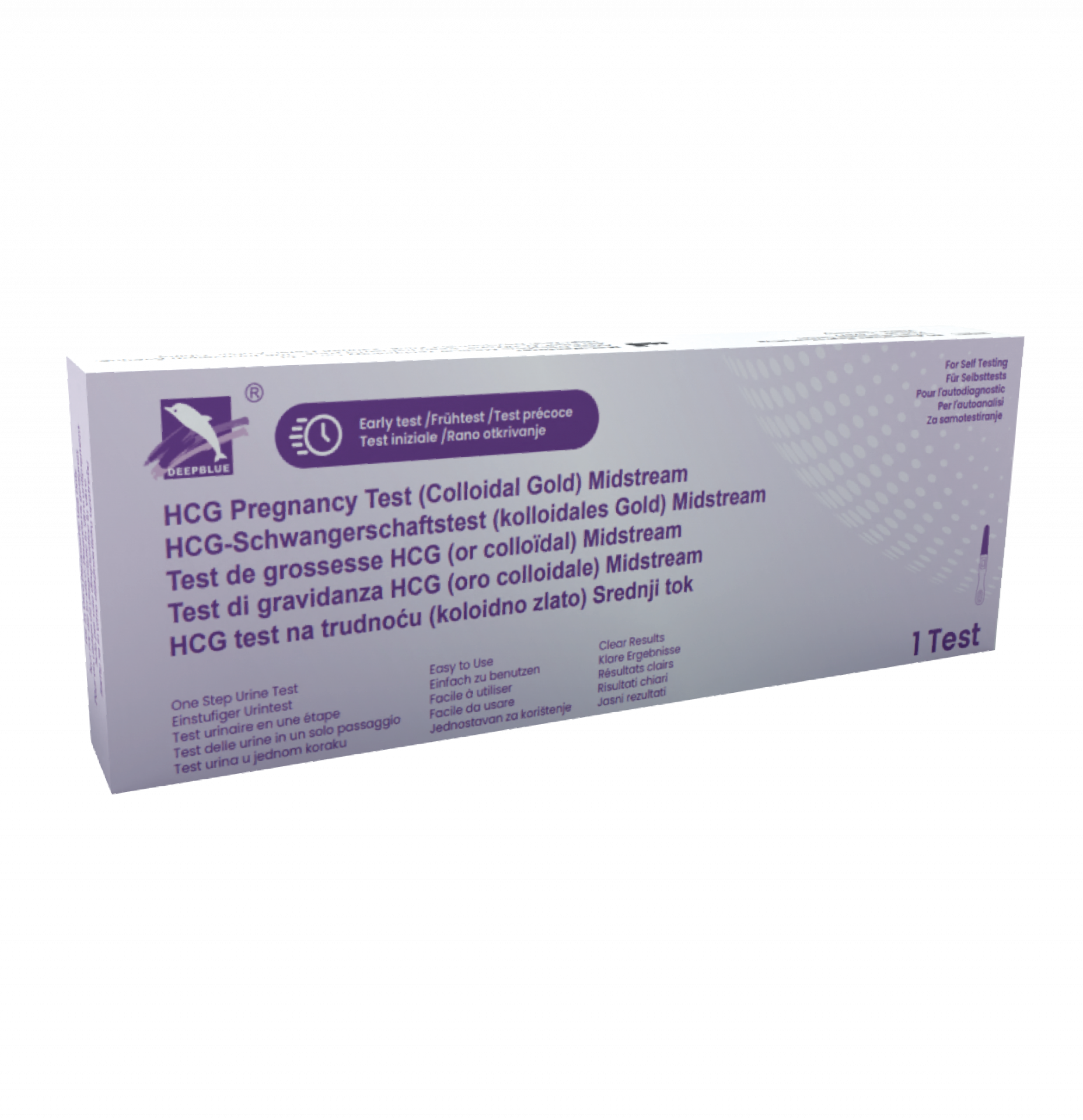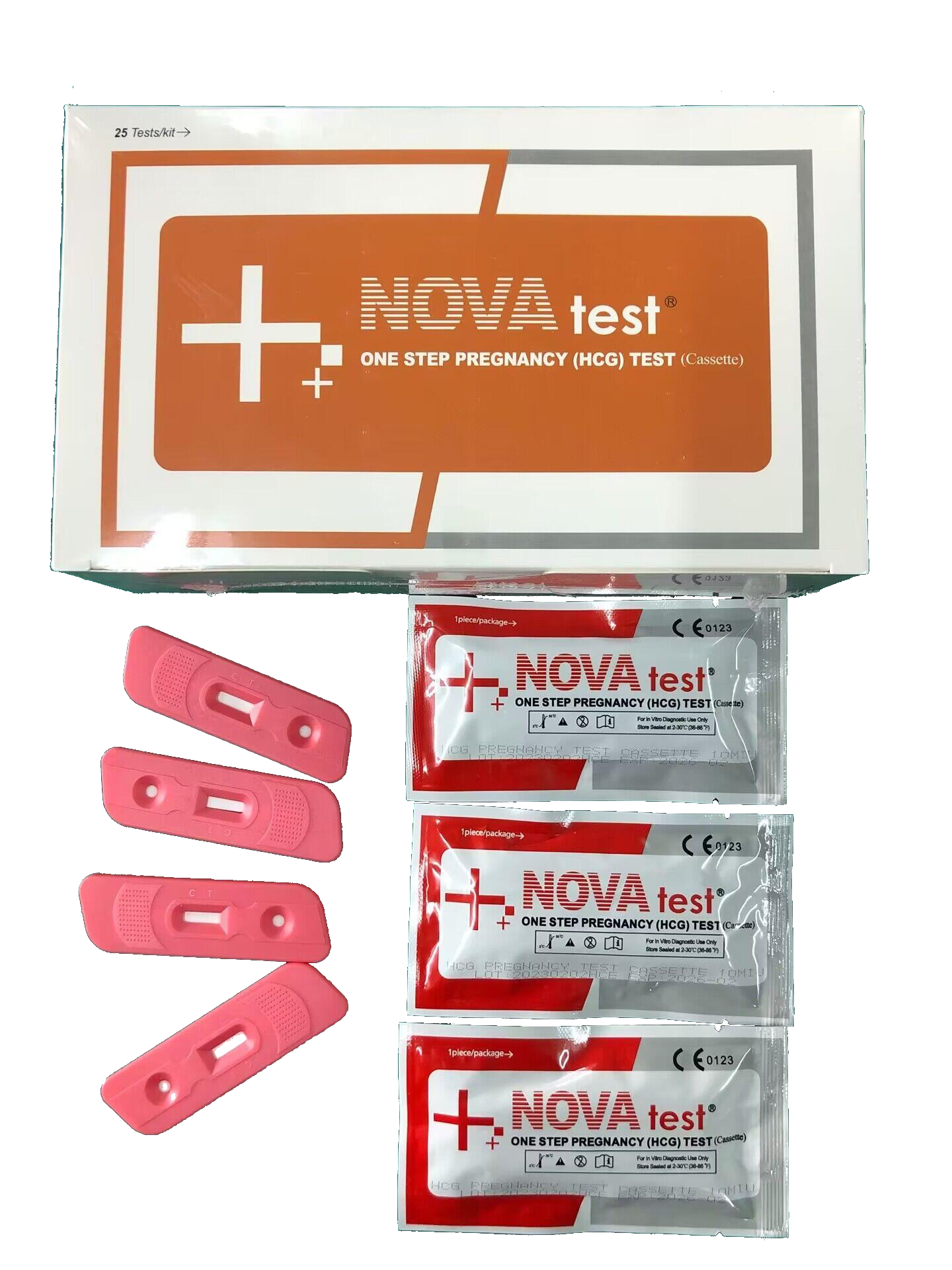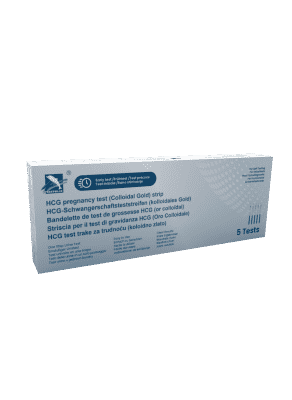Buy Fertility Test
Explore our range of fertility tests at OdemShop. Our tests provide precise and reliable results, supporting you on your journey to parenthood.
Fertility Test - How ovulation tests and pregnancy tests - Everything you need to know
Fertility tests are an important part of medical care. They help people find the types of tests that best meet their individual needs and allow them to act responsibly. This article provides you with information about different tests for fertility-from ovulation tests to pregnancy tests-and the reason for using them. It will give you the opportunity to make informed decisions regarding these issues and thus help others establish positive health practices.
What are fertility tests ?
Fertility means nothing more than fertility. Accordingly, fertility tests are tests that are performed to determine if a person is able to conceive or give birth to a child. They can help reveal factors that may affect a person's fertility, such as hormone imbalances or an abnormality of the female reproductive organs.
The most common types of fertility tests are ovulation and pregnancy tests. Ovulation tests measure hormone levels such as luteinizing hormone (LH), which indicates when a person is most fertile during her cycle; while pregnancy tests measure human chorionic gonadotropin (hCG), which indicates whether or not someone is already pregnant.
These tests offer high accuracy and reliability and are therefore very beneficial for people who want to get pregnant or who want to avoid pregnancy. With these tests, couples can more easily plan their family life and understand what options may need to be explored further to more accurately understand possible infertility factors. By identifying potential fertility issues early, couples can then begin exploring available treatments sooner, increasing their chances of success sooner.
Benefits of early detection
Fertility testing can help guide people in making decisions about their fertility status and identify potential problems early. These tests offer many benefits, including early identification of abnormalities that can interfere with the natural conception process. They help couples plan their families, can indicate ovulation to determine pregnancies early, and give parents the opportunity to make responsible decisions regarding child planning and conception. There are several types of fertility testing that people can use today.
There are different types of tests
There are several tests that can help diagnose fertility problems. These include ovulation test types, pregnancy test types, hormone fertility tests, ultrasound fertility tests, and fertility blood tests.
- 1- Ovulation test types: This test measures the level of luteinizing hormone (LH) in urine. Just before ovulation, the LH level increases and this increase can be detected with an ovulation test. By detecting the presence or absence of the LH surge, it is possible to determine when there is the highest chance of conception.
- 2- Pregnancy test types: A home pregnancy test measures the level of human chorionic gonadotropin (hCG), which is produced during the early stages of pregnancy. Home pregnancy tests detect hCG levels starting at about 25 mIU/mL, which usually corresponds to 15 days post-implantation.
- 3- Hormone fertility tests: these tests measure hormones associated with conception, such as follicle stimulating hormone (FSH), estradiol (E2), progesterone, prolactin, and testosterone. The results of these tests are often used to create a treatment plan specific to each patient's needs.
- 4- Ultrasound Fertility Testing: an ultrasound is performed when there is evidence of a structural problem causing fertility problems, such as cysts or fibroids on the uterus or fallopian tubes that need to be treated surgically before trying to conceive again. It allows doctors to better visualize any abnormalities in the reproductive organs that may naturally prevent successful conception.
Fertility blood tests: Doctors typically order a blood test each month during ovulation cycles so they can track changes in hormones during different phases of the cycle to assess overall ovarian health and function over time. These blood draws provide detailed information about hormonal profiles that provide insight into whether a woman is producing eggs regularly and ovulating properly each month or not at all.
It is important to understand the various testing options, both for diagnostic purposes and for further exploration once a diagnosis has been made, in order to make informed decisions in the fertility journey toward parenthood goals while seeking appropriate medical support whenever needed. Let's now explore further and dive deeper into the 'basics of ovulation testing'.
Ovulation test basics
Ovulation tests are an easy way to find out when a woman is most fertile. They can be used to determine the timing of sexual activity to increase the chances of pregnancy. An ovulation test usually consists of a test strip that picks up a small amount of urine.
A positive test means the woman is fertile the next day. A negative result means that the woman is not fertile. It is important to note that an ovulation test only indicates single days when the woman is most fertile. It is therefore advisable to perform several tests to get a more accurate picture.
The procedure involves taking urine or blood and testing for certain hormones associated with ovulation. The ovulation test is easy to perform and can be done in the privacy of your home. However, it is important to note that there are differences in the various tests and it can be difficult to interpret the results correctly.
The accuracy of an ovulation/pregnancy test depends on the product. As a general rule, these tests should be 95% more accurate than false positives. This means that only 5 times out of 100 will falsely indicate that you are pregnant, even though you are not yet pregnant. Therefore, you have to be careful with it and always read the instructions before taking the test.
When handling ovulation/pregnancy tests, it is recommended to wear gloves and keep everything clean and hygienic. Again, think about your safety! If you have any questions or are unsure, always consult a doctor or expert for further information on how to use ovulatory tests as well as how to interpret the results. This is the best way to find out what works for you and what measures are most effective.
How to interpret ovulation test results
Interpreting ovulation test results can be confusing and overwhelming. Accurate interpretation allows individuals to better understand their reproductive health and make informed decisions regarding family planning. To simplify this process, let's look at the basics of understanding your ovulation test results.
When reading your ovulation test result, it is important to pay attention to both the intensity of the line or symbol and its color. The more intense a line appears, the higher the levels of luteinizing hormone (LH) in the urine at that time. A faint line indicates lower LH levels, while no visible line indicates minimal levels. It is also helpful to compare lines between multiple tests on different days to identify patterns in LH production during the cycle. Certain brands may also use different colors for positive and negative results; therefore, always consult package instructions before attempting to interpret results.
Finally, it is important to know when you are likely to have ovulated to determine the fertile window of your cycle. Ovulation typically occurs 12-24 hours after a peak LH reading is detected from your ovulation test - meaning if the highest intensity line appears on day 9 of your menstrual cycle, then ovulation likely occurred on day 10 or 11 of your cycle. Understanding these fluctuations can provide valuable insight into your own unique fertility cycle, which can be helpful for couples who want to get pregnant or for those seeking family planning alternatives such as birth control pills or other contraceptive methods.
Pregnancy Test Basics
A pregnancy test is a test used to determine if a woman is pregnant. It is a simple and quick way to find out if a woman is pregnant or not. In most cases, a pregnancy test can be done at home. There are different types of pregnancy tests, such as urine tests, blood tests, and ultrasounds. The test can help detect pregnancy early, which is important to make sure you get the right treatment.
Pregnancy tests work differently than ovulation tests - they look for human chorionic gonadotropin (HCG), which is produced in the early stages of pregnancy. HCG is a hormonal signal produced by the embryo and later produced placenta. There are specially designed tests with high sensitivity for both blood and urine tests; however, the latter require more time to interpret the result than blood tests. Because these tests can identify more sensitive levels of HCG than simpler rapid store-bought tests, using professional prenatal tests often provides better results with greater accuracy.
Both types of tests have advantages and disadvantages in terms of accuracy, cost-effectiveness, and convenience levels. While ovulation and gestational age tests serve different purposes, both represent a positive step toward family planning - but you must be willing to do the relevant research to ensure more accurate results!
How can pregnancy test results be interpreted?
It is important to find the right way to interpret pregnancy test results correctly to get a reliable result. When reading the results of a pregnancy test, it is important to consider the type of test used as well as its accuracy.
Home pregnancy tests detect a hormone called human chorionic gonadotropin (hCG) in urine. These hCG levels can indicate when conception has occurred and whether a woman is likely to be pregnant. Home pregnancy tests usually provide positive or negative results. However, there are some models that show intermediate results that require further interpretation. Regardless of the home pregnancy test used, all should include detailed instructions on how to properly read the results.
In addition to the correct interpretation of an individual test, it is also important to consider other factors that may affect the accuracy of a result, such as time, possible user error, expired tests, or improper storage conditions. For example, testing too soon after trying to become pregnant or using diluted urine specimens can lead to inaccurate results. In addition, it is not recommended to rely only on a single result; it is advisable to repeat the same test at least twice with fresh materials to ensure that the original result was accurate.
It is important to understand how to interpret pregnancy test results in order to obtain reliable information about possible pregnancies and take appropriate next steps. With this knowledge, users must then take accuracy and reliability considerations into account before making decisions based on their own home testing.
Accuracy and reliability considerations
Several factors must be considered when evaluating accuracy and reliability. These include the quality of the measurement equipment and procedures used and the accuracy of the data collected. In addition, the experience of the personnel performing the measurements and the regularity of the measurements play a critical role. It is important that the measurement results are comparable and reproducible so that they can be used for analysis and decision-making.
When evaluating potential tests, research should be done into the manufacturer's claims of accuracy and reliability. The best way to do this is to obtain independent reviews from users or medical experts who have tested various products available on the market. In addition, manufacturers must provide detailed documentation measuring accuracy and reliability to prove their validity.
It is also important to note that although some tests offer a high level of accuracy, they can lead to incorrect measurements or unreliable results if used incorrectly. Therefore, it is important to read the instructions carefully and follow them closely when performing any type of testing procedure. By understanding the importance of these considerations, patients can make informed decisions about which tests will provide the most reliable results for their individual needs.
Alternatives for couples who have difficulty getting pregnant.
The unfulfilled desire to have children and difficulty conceiving can be very frustrating. However, there are fertility/fertility alternatives that couples can consider:
- Intrauterine Insemination (IUI) - IUI is a technique in which sperm are injected directly into the uterus to increase the chances of a successful pregnancy.
- Artificial Insemination - More simply called IVF or IVF, this method is suitable for couples whose infertility is caused by reduced sperm count or unexplained causes.
- Embryo adoption - This option allows couples to cope with the adoption process and adopt a child that was created as a result of other treatment options.
- Medication Treatment - Medication may be helpful for a variety of hormonal disorders of the female reproductive system, as well as other causes of infertility.
It is important to note that fertility treatment may not always work. If you plan to take medical steps to improve your fertility, it's best to talk to your doctor about different options and risks. With all the potential alternatives and information, working with a specially trained doctor offers patients and their partners the best possible chance of success. Therefore, it is advisable to take your time and carefully consider all options.
Conclusion
After looking at the different aspects of a test for fertility, we can conclude that each test has its own specific requirements. It is therefore important when buying and using tests to carefully check that the test chosen meets the requirements. This includes considering all the necessary factors to ensure that the test is both accurate and reliable. This is the only way to be able to rely on the result of the test and make effective decisions. As the saying goes, "no testing, no confidence" - only with a thorough assessment can you ensure that your ovulation or pregnancy test will give you quality results.
It is important to carefully consider whether the test you choose is up to par when purchasing and using tests. This includes considering all the necessary factors to ensure that the test is both accurate and reliable. Only then can you rely on the test's result and make effective decisions. As the saying goes, "No testing, no confidence" - only with a thorough assessment can you ensure that your ovulation or pregnancy test will give you high-quality results.
Click here to go to our main categories:
Frequently asked questions
What is a fertility test and when should I have it done?
A fertility test is a test that evaluates fertility in both men and women. If you are having trouble getting pregnant or want to start a family, a fertility test may be useful. The test can evaluate several factors such as sperm count, sperm motility, hormone levels, fallopian tube function, and egg reserve.
How is a fertility test performed?
The test can be performed by a doctor and usually involves a physical exam, as well as blood and urine tests. Men must provide a semen sample, which is then tested for sperm count and quality. Women may undergo an ultrasound to examine their ovaries and fallopian tubes.
How conclusive are fertility tests?
Fertility test results can vary and are not always reliable. However, the test can help identify potential fertility problems and appropriate treatment options.
How can I prepare for a fertility test?
It is recommended that you avoid alcohol and cigarettes and maintain a healthy lifestyle before the test. It may also be useful to make a list of questions to ask your doctor to clarify any uncertainties.
What can I do if the fertility test shows infertility?
If the test shows that you or your partner are infertile, there are several treatment options, such as in vitro fertilization (IVF) or intrauterine insemination (IUI). Your doctor can help you find an appropriate option based on your individual needs.
What are the costs associated with fertility testing?
The cost of a fertility test can vary depending on the type of test and where it is performed. It may also be that health insurance will cover the cost, so it is a good idea to check in advance.
Can I do a fertility test at home?
There are several tests you can do at home, such as sperm supplements that measure sperm count. However, these tests cannot evaluate all aspects of fertility and are often not as reliable as tests performed by a doctor.
Can a fertility test be performed on both men and women?
Yes, a fertility test can be performed on both men and women. The tests can evaluate several factors, such as sperm count, sperm motility, hormone levels, fallopian tube function, and egg reserve. However, the specific tests may vary by gender.
Can infertility be treated?
Yes, there are several treatment options for infertility, such as in vitro fertilization (IVF), intrauterine insemination (IUI), or taking hormones. Treatment options depend on the cause of infertility and may be recommended by your doctor.
Can certain foods or supplements affect fertility?
There are certain foods and supplements that can affect fertility, such as foods rich in antioxidants or containing folic acid. However, it is important to consult your doctor before taking any supplements to make sure that they do not have negative effects on your health and do not interact with other medications.

